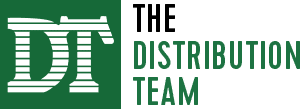When I work with private distributors or groups, I almost always hear someone complaining about shrinking margins or margin squeeze. They want to point fingers all over the place – the infidelity of the suppliers, the cost of transportation, the saturation of distribution in the market, etc. I always find it humorous when every city I visit is “a really competitive market”, as if there was some utopia where competition didn’t occur.
While it is true that there has been clear margin erosion over the last several decades, I feel that distributors have become narrowly focused on the silver bullet of improving gross profit percentages – negotiating better buys with their suppliers. This “club in hand” approach to margin improvement may buoy margins temporarily, but it doesn’t produce lasting results. Perhaps a shotgun approach would be more effective.
Over the last several years, I have been exposed to several ways to improve gross margins in a distribution organization without asking the supplies for lower prices. Over the course of this two part article, I will outline several ways to improve gross margins using internal operating methods. All of these methods are time tested and can be implemented with very little cost. It will just take some concentrated effort and diligence.
Raise Prices on a Regular Basis
When do most distributors raise prices? When the suppliers raise their price. This isn’t too difficult to understand. No one wants to be the bad guy here. We adopt a “don’t shoot the messenger” mentality. Don’t blame me, the manufacturer raised prices. For most of us, this only occurs once or twice a year. So why don’t we raise prices on our own timetable? What are we really afraid of?
If we were to do a global increase on our pricing matrix, raise prices by a 1.05 multiplier, what would the reaction be? Since this would result in a 5 percent increase, we would probably alienate several customers. What if our multiplier was 1.005 instead? How many customers would we alienate? When I have posed this suggestion to most distributors, many of them agree that there would be very little objection or notice. What did we just do? We raised our gross margin percent by half a percent. If you do this a couple of times a year, significant improvement can occur over time.
Leverage Manufacturer Price Increases
Leveraging our traditional price increase method of waiting for the supplier to raise prices can also work to our advantage. When a manufacturer comes out with a price increase of 10 percent, does that mean that we can only raise our prices by 10 percent? Is there any rule of distribution that says we can’t raise prices by 11 or 12 percent when this occurs? Not that I am aware of. You may want to be a little strategic here and stagger the increase based on popularity of the item. Popular items may only get the standard 10 percent increase; but as the items wane in popularity, raise the selling price by 11 or 12 percent. This will allow you to raise prices under the radar.
Unfortunately, this strategy can be thwarted by manufacturers who publish their price list out to the end users. This is a terrible practice and it handcuffs distributors from making money in a market. The excuse of “this is the way we have always done it” doesn’t wash in a modern economy. Manufacturers, stop publishing trade list prices. Your customer is the distributor, not the end user.
As I was preparing for this article, I solicited some ideas from distributors who are consistently at the upper end of the profit spectrum for their industry. One of these companies uses a “mark to market” approach with their inventory. When a price increase occurs, they mark up their inventory to the new cost basis from the supplier. This forces the sales team to adjust their quotations and pricing strategies very quickly. This company eliminates the practice of sales people selling older inventory at a reduced price. In fact, they are capturing greater gross margin on the sale of this older inventory.
Adopt a Standard Cost
I published an article on this practice several years ago and was accused of furthering the accounting chicanery of Enron and the likes. Let me set the record straight. This has nothing to do with fudging the books and everything to do with raising prices. The basic idea here is to create a savings plan for the organization based on the cost of goods sold. This practice is sometimes referred to as a landed or loaded cost.
Many software systems have many cost fields available – last cost, average cost, base cost, standard cost, etc. Unfortunately, sales people generally see all of these on their screen. Which one are they going to pick when they quote price? The lowest one, of course. The first step is to show only one cost to the sales people. This reduces the confusion. Even if you don’t go down the standard cost trail, limit the screen to show base replenishment cost. This will save you margin.
When personal financial planners teach us how to save for retirement, do they tell us to take out a chunk when we first get a paycheck or after we have paid our expenses? If you take the example of a 401K, the savings percentage is taken out before the money is in your hands. A standard cost percentage functions the same way. We carve out a percentage of the cost of goods sold on every transaction to create a rainy day fund for the business.
The mechanics are fairly simple. Take the base replenishment cost, this is the one that comes from the supplier price sheet, and add a nominal percentage to that figure. I suggest half a percent to 5 percent depending on the popularity of the item or product category. The result, after adding the percentage bump, becomes the new standard or loaded cost. This is the cost that your sales people will see in the system. Most sales people have an acceptable gross margin in their head. We are just starting them at a higher place. In some packages, this is new cost field referred to as a “commissionable cost” because it is what sales commissions are based off of. I tend to shoot for an overall accumulation in this fund of 3 percent of cost of goods sold.
Rather than hiding the fact that you are doing this, I encourage you to talk to the sales team about the practice. The additional dollars in the standard cost account pay for all sorts of cost of doing business items, such as fuel prices or health insurance premium increases, that we can’t simply pass on to the customers. It can also allow us to save for technology improvements that will improve our overall customer service offering.
Every one of these solutions is an internal change in the status quo. The good news is that you are not reliant on asking for some price concession from your suppliers. Rather than bemoaning the poor economy or lamenting the good old days, refocus your energy on the internal opportunities. Don’t let the market dictate how much money you are going to make. There are plenty of nickels, dimes and quarters available for those of you willing to look. Look for part 2 next month.


